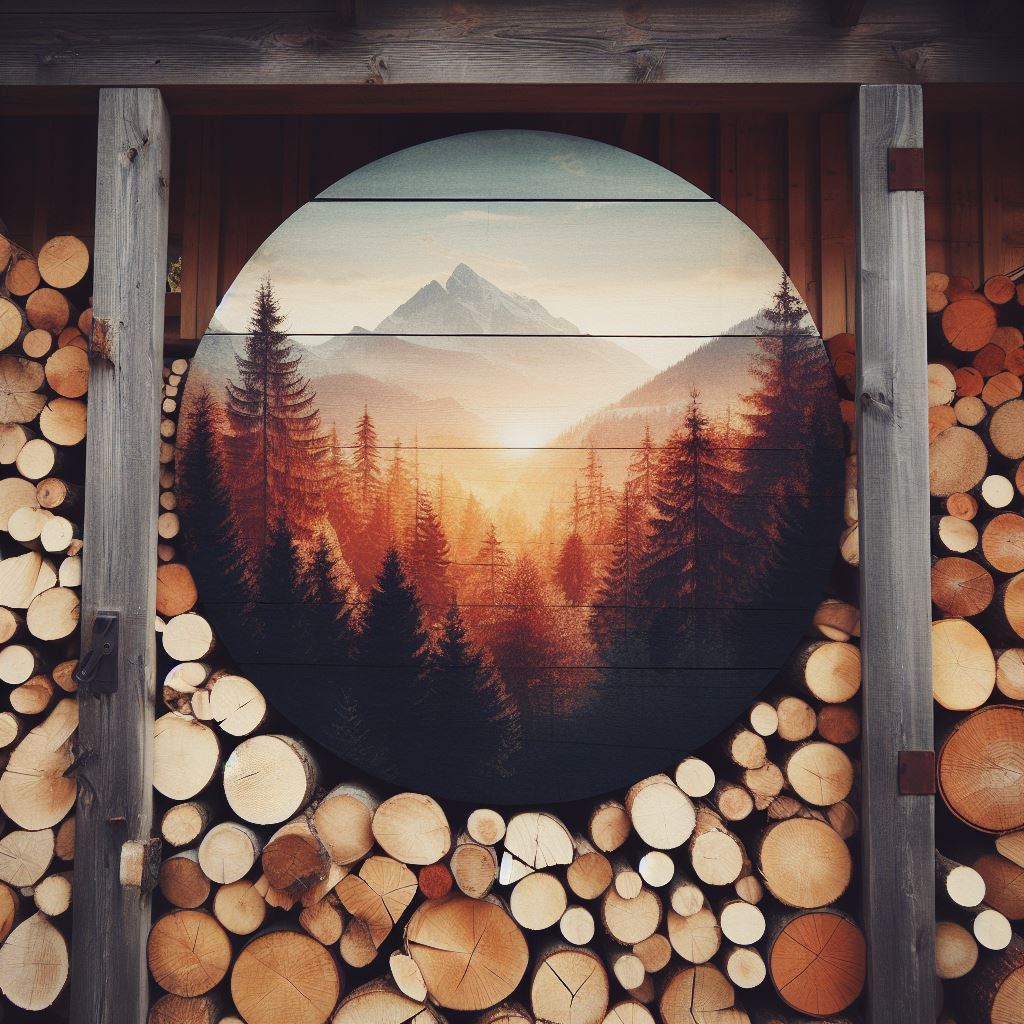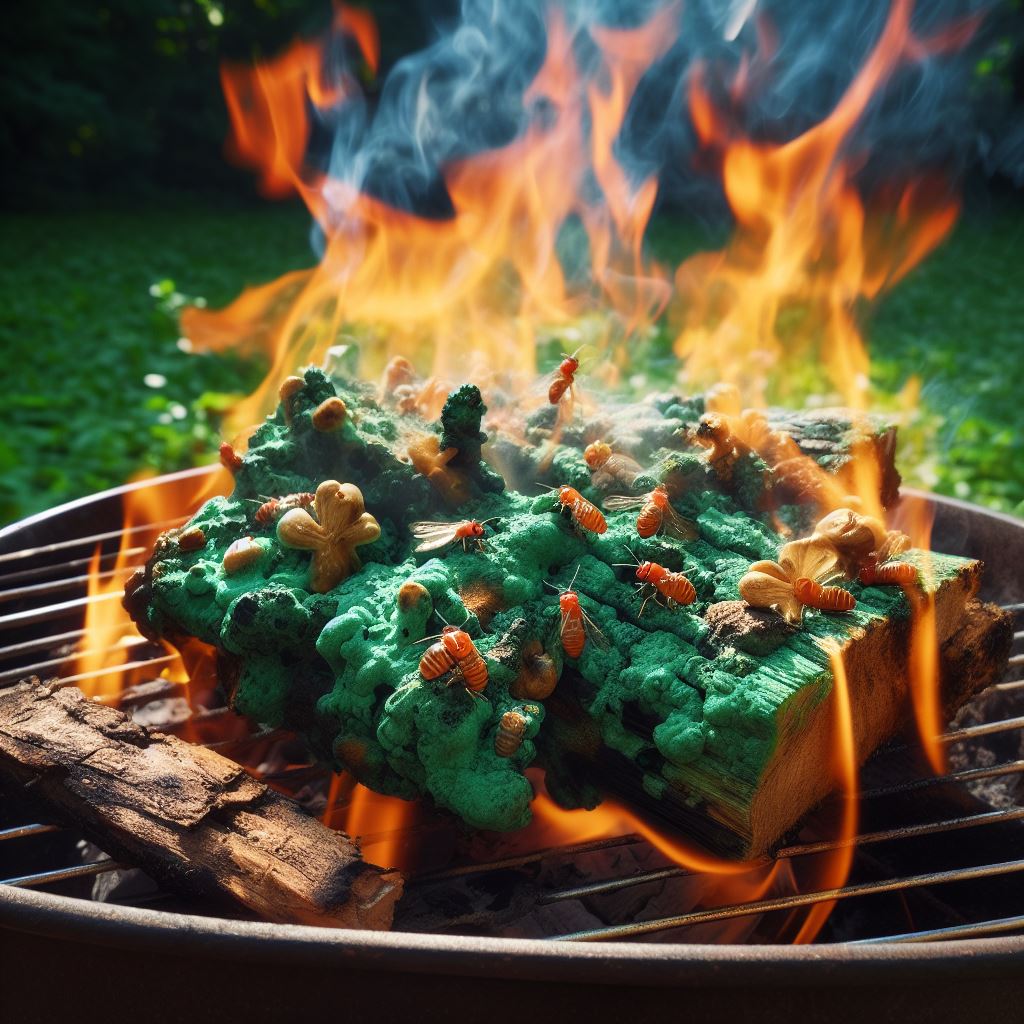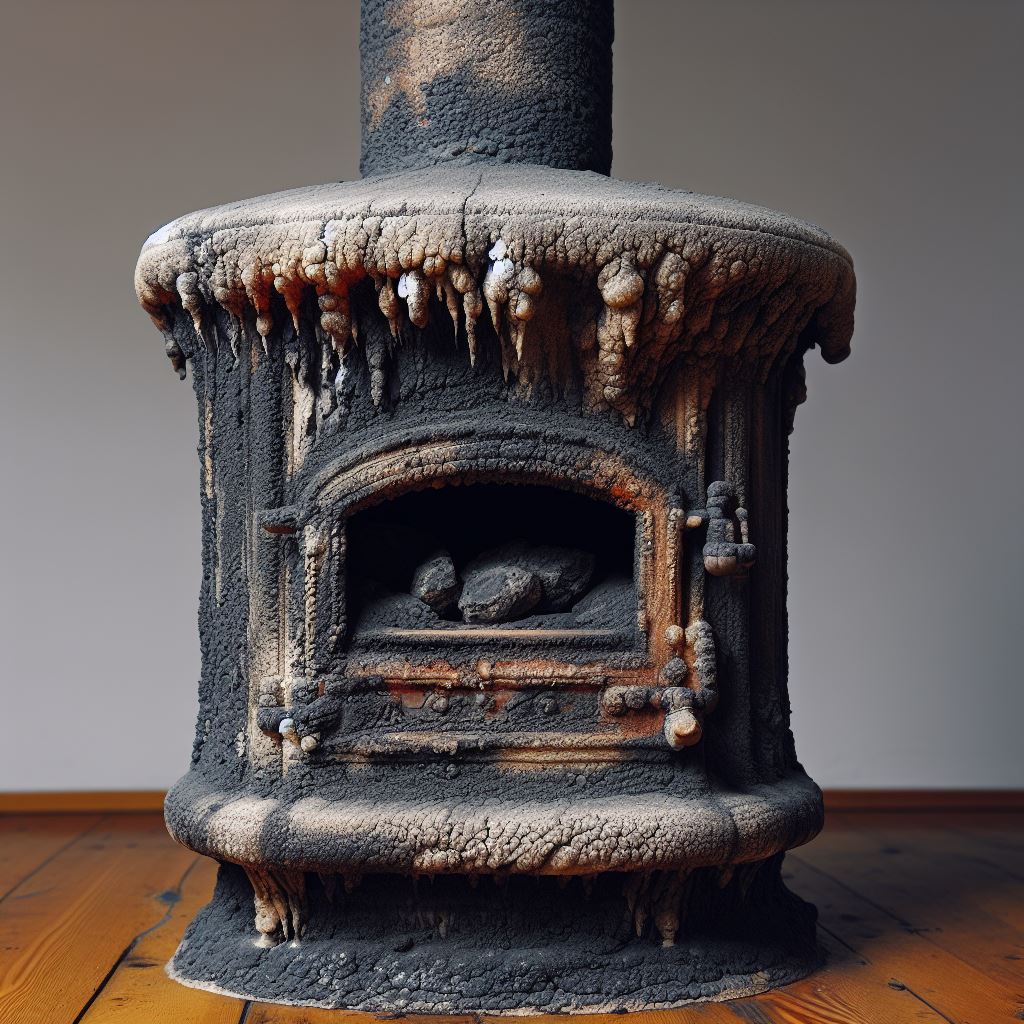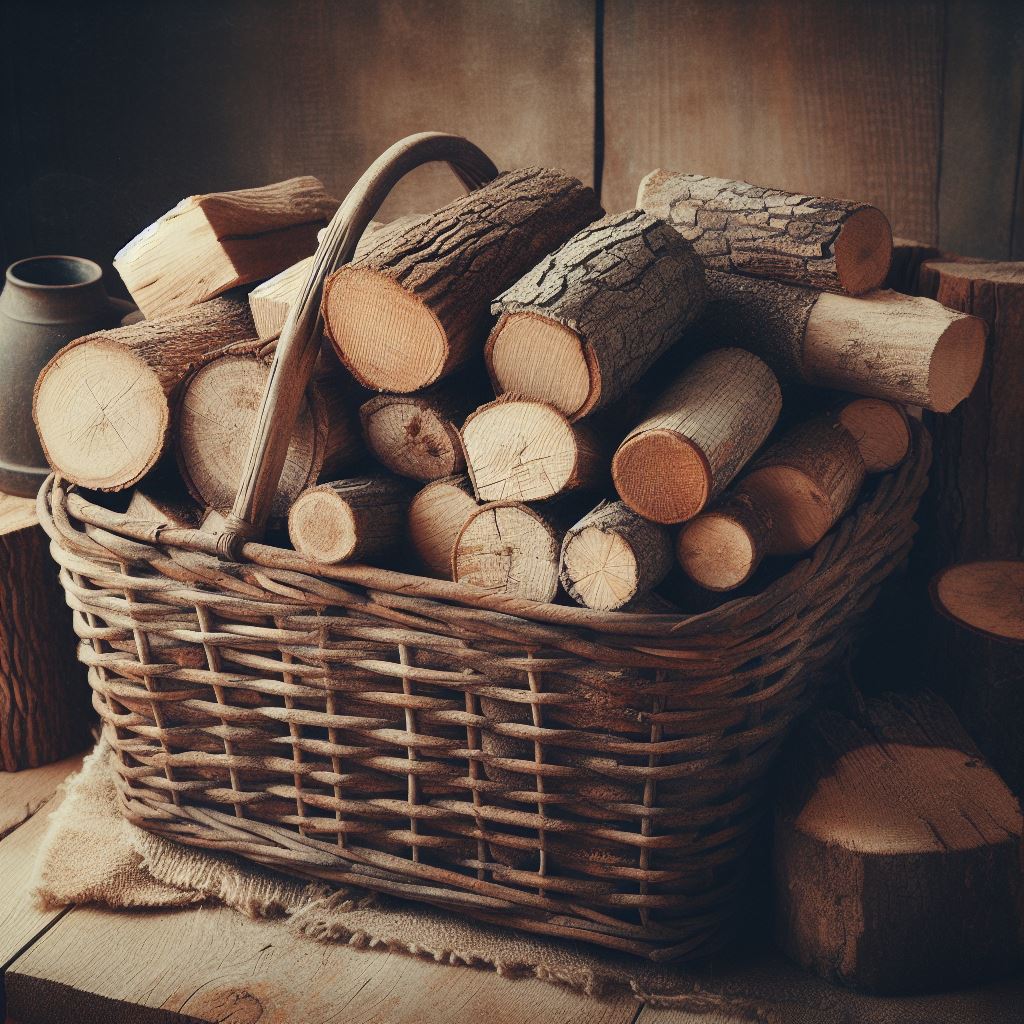Are you thinking of sparking up a fire using seasoned wood for your next BBQ, cosy night in, or epic bonfire? You have landed in the right place. We are going to navigate you through the maze of choosing between seasoned wood, kiln dried wood, and not-so-great green wood. Honestly, the kind of wood you pick makes a big difference. So, stay tuned to arm yourself with some valuable insights that will level up your next fire-lit gathering.
What is seasoned wood?
So, you are interested in learning “what is seasoned wood?” The seasoning process involves leaving wood out to dry for a significant time, typically from six months to a couple of years. It has comparisons to letting a good whisky age; it only gets better with time. Seasoned firewood (also called air-dried firewood) is a solid fuel you want for bonfires, BBQs, a wood burner, a cosy fireplace, or other heating system. When wood is wet, it is just a hassle, with less heat, and more smoke, and wet wood is popular with nobody, including neighbours and UK lawmakers.
Choosing to season wood is an old-school practice, this has been happening for hundreds of years. It is kind of like a craft beer; it has its own character, all its own. Mother Nature does her best to season firewood with wind, sun, and air, and each of the seasoned logs ends up being its own unique masterpiece. You can usually tell it is ready for burning when the wood goes a bit grey and looks a bit cracked and weathered (literally!)
But unfortunately, seasoned wood can be a bit unpredictable. The moisture level is not always uniform, especially if stored under tarpaulin, which can create condensation. You will need to buy a moisture meter to accurately gauge the moisture content of the firewood. Also, storing seasoned hardwood logs and seasoned firewood for long periods can be space intensive. You also must ensure that seasoned firewood will not succumb to rot or become a five-star bug hotel.
It is also important to understand the origins of your wood. We only sell FSC-certified wood at Cozilogs. If you care about the planet, you should understand its origins and have comfort in the fact that you are not seasoning firewood, which is contributing to global deforestation.

Seasoned logs burn well, but be careful to ensure they are from sustainable sources
What is kiln dried wood?
Moving on to kiln dried wood, which is a solid fuel we sell at Cozilogs. You could compare this to the top-quality fast food of firewood; it is ready to go, and super quick. Instead of waiting around for months, this wood (most usually logs) is placed into a massive oven (a type of specialised kiln) and dried out in a matter of days. It is the high-speed Wi-Fi version of seasoned logs. For a detailed explanation of the kiln drying process, click here.
Kiln dried wood is pretty much a go-to choice for a lot of modern setups. If you are living the city life and just want some kiln dried logs for a quick BBQ or to heat your flat, this is a quick and easy option. It is consistent, easy to store, and you do not have to worry about bugs or mould.
The kiln dried logs also look a bit fresher, usually a brighter colour, and they feel super dry to the touch. Kiln dried wood catches fire like a dream, and it is important to generate immediate heat. It is like a Netflix binge series, i.e., firewood, which delivers what you want when you want it.
Kiln drying does make this wood pricier than seasoned wood. You are paying for convenience and a higher heat output. In a nutshell, if you are looking for speed and reliability, kiln dried wood is a trustworthy option.
Kiln dried wood after drying on the left and in a kiln drying on the right
Advantages table
Before we explore the details, it is useful to have a side-by-side comparison of seasoned wood vs kiln dried wood. Naturally, we are using “like for like”, for example, seasoned hardwood logs, or kiln dried hardwood logs or firewood equivalents. This table will help you grasp the key features, advantages, and drawbacks of each, making your choice easier:
| # | Feature | Seasoned wood | Kiln dried wood |
| 1 | Aesthetic appeal | Often greyish with cracks, considered more rustic | Brighter in colour, looks fresher |
| 2 | Availability | Widely available but season-dependent | Generally available all year round |
| 3 | Combustion quality | Generally good but can vary | Excellent and consistent |
| 4 | Convenience | Requires advanced planning for seasoning time | Convenient; ready to burn immediately |
| 5 | Cost | Generally cheaper but prices can vary | Typically, more expensive due to the energy costs of kiln drying |
| 6 | Drying time | Takes six months to two years to naturally dry |
Dried in a kiln within days |
| 7 | Eco-friendly | Less energy-intensive, but make sure it is from a sustainable source | Energy-intensive due to the kiln process |
| 8 | Energy efficiency | Good, but can be inconsistent | High and consistent energy efficiency when burning |
| 9 | Insect risk | Possible, if not stored properly (e.g., a log store) | Low risk due to high temperatures during drying |
| 10 | Longevity | Depends on storage conditions; can deteriorate if not stored properly | Long-lasting if kept in proper conditions |
| 11 | Moisture content | Variable, but generally lower moisture content than fresh wood | Consistently low moisture content, usually around 10-20% |
| 12 | Odour | Varies; can develop a musty smell if not stored correctly | Usually has less odour due to the kiln drying process |
| 13 | Smoke production | Lower than green wood but can vary | Minimal smoke due to low moisture content |
| 14 | Storage space | Requires a good amount of storage space for drying | Ready to use, less space needed |
| 15 | Weight | Lighter than fresh wood but can vary | Consistently light due to low moisture |
Hopefully, this table gives you a clearer picture of what to expect from both types of wood.

Nobody likes burning green wood
The Pitfalls of burning green wood
So, are you thinking about just grabbing some fresh-cut unseasoned wood and tossing it into the fire? Hold up. Before you do, let us explain why burning green wood is setting you up for failure:
- Bad for Mother Earth - if you care about your carbon footprint, green wood is not doing you any favours. It releases more emissions compared to seasoned or kiln dried wood
- Creosote alert – this builds up in your chimney or stovepipe and it is challenging to clear. Creosote is flammable and can lead to some scary situations such as chimney fires
- Hard to light – have you ever tried to set a damp towel on fire? The same applies to green wood; the higher moisture content makes it super hard to ignite
- Inconsistent heat – do not expect a cosy, warm fire. The heat output from green wood is all over the place because of its high moisture content
- Bug invasion - unseasoned wood can sometimes bring along some unwanted guests, like insects and even mould if it stays damp
- Bad air quality - burning green wood is an air pollution hazard. It releases more particulates, affecting both indoor and outdoor air quality. Unseasoned wood will fail the DEFRA clean air strategy, 2019 guidelines
- Space-consuming - since it is not ready to burn, you will need to store it somewhere while it dries. That takes up a lot of precious space, especially compared to seasoned or kilned dried methods which need fewer logs
- Bad odour - we all love that wood-burning smell, but green wood? It smells off, to be honest, and the odour lingers around
- Too much smoke - look, no one wants a smoke-out, especially indoors. Unseasoned wood produces excessive smoke because it is still full of moisture
- Wastes energy – you are going to spend a lot more time and energy trying to get a decent fire going. The high moisture content in green wood makes it burn inefficiently in a wood burner, wood burning stove, on BBQs and other burning devices
For all these reasons, you are way better off opting for seasoned hardwood logs or kiln dried hardwood logs. Not only will your fire be alight and warm, but you will also be doing the planet a big favour.

Avoid creosote build-up by not burning green wood
Conclusion
Alright, so let us conclude. If you are eyeing a solid bonfire or a chill night by the fireplace, you have two valid options: seasoned wood or kiln dried wood. Seasoned wood has character but can be a bit unpredictable. Kiln dried wood, on the other hand, is like your trusty streaming service, it is reliable and ready whenever you are, it costs a little more, but most people would agree the extra cost is worth paying.
Seasoned logs and kiln dried logs beat green wood hands down, which is the equivalent of a buffering video, annoying and totally not worth the hassle. So, whether you are a seasoned pro or a kiln dried logs convert, just make sure you are not contributing to deforestation and you are helping the environment.
Contact Cozilogs
Call Cozilogs on (01905) 954 736 to order our best kiln dried logs. All the logs we sell are fully certified Woodsure compliant and will be great for BBQs, home heating, and open fires, etc.,
If you have months to wait, you could prepare your own firewood and seasoned logs, but we do not sell them here! Instead, order from us through our fast and friendly service and receive prompt delivery of our firewood directly to your door in just a few days. Or if you prefer email via our contact form for an early reply.

